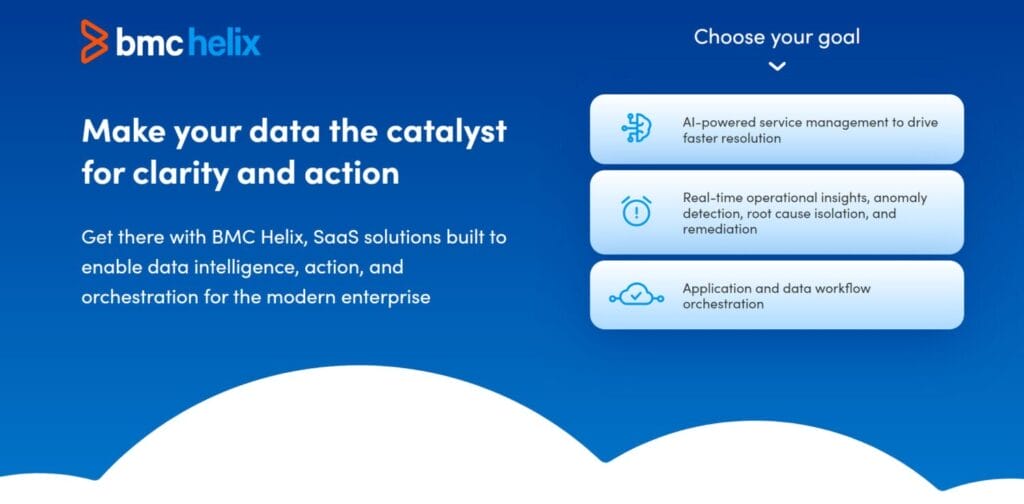ServiceNow has been a key participant in the IT Service Management (ITSM) business for quite some time. Its reputation for providing comprehensive service desk solutions, automating corporate operations, IT service management, and digital workflows is well-earned. However, not all firms feel it to be the best fit for their purposes. As a result, in this post, we will look at the top 8 ServiceNow alternatives available.
Table of Contents
What is ServiceNow?

ServiceNow is a major IT service management application that helps your organization boost agent productivity and speed up issue response. It allows you to automate your IT support for common requests with virtual agents.
- ServiceNow is well-known for its IT service management capabilities, which allow IT departments to manage incidents, service requests, problems, modifications, and IT assets.
- It enables HR organizations to automate and streamline employee services like onboarding, offboarding, and queries.
- The platform enables businesses to create unique applications to satisfy specific business requirements utilizing low-code or no-code development tools.
- ServiceNow connects with a variety of third-party systems and offers automation tools like as workflows, scripts, and APIs to streamline business processes.
List of 10 ServiceNow Alternatives
1. Zendesk

Zendesk is a popular ticketing system that allows you to communicate with customers via message, chat, social media, email, and voice. You can establish a large community forum in which customers can ask questions, offer answers, and engage with one another.
Zendesk, like ServiceNow, helps you reduce ticket volume through self-service choices. You can create an integrated help center that allows clients to solve primary concerns at their own pace.
- Engage and support consumers using AI-powered answer bots.
- Prioritize urgent customer issues requiring immediate responses.
- Use intelligent ticket routing to avoid leaving an issue hanging.
- Monitor and enhance your customer satisfaction (CSAT) level.
- Reward the top contributors to your community forum with appropriate badges.
Also, you may read 10 Best Customer Experience Management Software | DELVE NOW!
2. Jira

Jira Service Management enables various corporate departments such as HR, IT, Admin, and Legal to swiftly set up service desks. You can quickly keep track of all incidents, requests, modifications, and assets in one place.
It was first developed to track bugs and issues in software development, but it has now grown to meet a variety of project and task management requirements. Further, Jira provides configurable processes, agile reporting tools, and extensive issue tracking capabilities.
Thanks to its integration possibilities with various other applications, such as Confluence and Bitbucket, Jira service management is a comprehensive solution for teams to plan, track, and deliver amazing software.
- Track IT assets for inventory and audits.
- Share ticket-related updates by email or SMS.
- Identify the root cause of incidents and problems.
- Save time by performing bulk actions on tickets.
- Enables teams to plan, track, and release great software with agile methodology support
Also, you may read 10 Best Small Business HR Software
3. ClickUp

With robust CRM capabilities, asset management features, and comprehensive knowledge base software with ClickUp Docs, it’s clear why it’s one of the most popular ServiceNow competitors.
Additionally, ClickUp provides powerful conditional logic Forms for collecting customer interactions and feedback. This adaptable, user-friendly, and configurable solution is ideal for small enterprises or large teams with major business requirements to boost client engagement.
- Native time tracking helps your team stay on task and within budget.
- Asset management with the sophisticated Docs feature for managing your knowledge hub.
- Workflow automations make it easier to delegate tasks, update teammates on progress, and convert to-do lists into to-done lists.
- A practically endless supply of templates for IT teams helps you decrease risks, technical debt, develop cybersecurity frameworks, and enhance retention with nimble customer service, so you never have to start from scratch for your next project.
Also, you may read 10 Best Customer Support Software
4. Halo ITSM

HaloITSM is a comprehensive ITSM software solution. It will turn your present working practices into intuitive, up-to-date procedures, allowing your teams to provide the best possible service to both clients and employees.
It will not only standardize your operations, but it will also provide vital data, allowing you to tailor your IT offering to the specific demands of your organization, both now and in the future.
- Streamline the entire incident management process, from ticket origination to issue resolution.
- Update incident status and examine details such as ticket ID, priority level, issue summary, and creation date.
- Link new incidents to current requests and share potential solutions with team members or end users via the knowledge base.
- Customer support representatives can view forthcoming tasks on a calendar and speed approval processes by requesting validation for ticket creation or change.
Also, you may read 10 Best Expense Management Software
5. BMC Helix

BMC Helix ITSM is a comprehensive and modern IT service management system that uses AI and machine learning to provide predictive service management. It provides a comprehensive range of ITSM capabilities, such as incident management, change management, problem management, asset management, and service request management.
BMC Helix is meant to be highly scalable and adaptable, making it ideal for large organizations. It supports both cloud and on-premises deployment, giving it the flexibility to fulfill the demands of varied organizations.
The platform’s AI-powered automation and predictive features boost operational efficiency, reduce service downtime, and improve overall customer experience.
- Maximize employee self-sufficiency by providing high-quality experiences and intelligent self-service
- Use service-centric root cause isolation to take corrective action and maximize performance and availability.
- Integrate any DevOps automation tool chain with ‘as-code’ interfaces to accelerate corporate agility, collaboration, and new technology adoption.
6. Sys Aid

SysAid made it onto our list due to its advanced service desk automation. The software simplifies the task of IT professionals tenfold and allows you to manage your assets and service desk with ease.
SysAid’s request, incident, problem, and change management capabilities are fairly effective, allowing for competent service management across the enterprise. SysAid also enables you to digitize your manual workflows by offering all of the tools you need to develop, manage, and exchange workflows amongst departments.
- Automate workflows and manage incidents, problems, changes, and requests with our comprehensive package.
- Simple to customize and configure.
- Excellent service level management.
- Strong third-party integration support.
Also , you may read Best 10 Chatbot Builders to Boost Your Sales
7. SuperOps

SuperOps comprehensive ITSM platform combines modern ticketing and simple asset management to deliver great IT services to clients.
SuperOps is a one-stop shop for IT and service teams that handles ticketing, inventory, invoicing, billing, and asset management through a single window. It has a rich, ever-expanding network of third-party integrations to enable you to enhance your platform’s capabilities and bring your technology stack closer together.
- Small and large-scale issue and service management using tickets and projects.
- Simplified service catalog for inventorying and managing all of your offers.
- Client tickets are linked to the appropriate assets for improved context and issue resolution.
- Invoicing and billing processes have been streamlined.
Also, yyou may read 8 Best Project Management Software
8. NinjaOne

NinjaOne provides a remote monitoring and administration platform for all devices and users. It includes features for RMM, endpoint management, patch management, backup, service desk, remote access, and more. It can provide real-time visibility into all of your IT assets. It will assist you with IT documentation and software implementation.
- NinjaOne has functionality for installing, uninstalling, and managing software on an individual or large scale.
- The platform allows you to manage both attended and unattended devices safely.
- Its backup capability keeps crucial corporate data safe from threats.
- It can automate the patching of any interconnected endpoints.
Also, you may read Best 10 Financial Risk Management Tools | Avoid RISKS NOW!
Conclusion
Choosing the right alternative to ServiceNow depends on your specific organizational needs, budget, and existing IT infrastructure. Each alternative offers unique strengths and features that cater to different aspects of IT service management.
Solutions like Jira Service Management provide user-friendly interfaces and strong integrations, ideal for seamless workflow management and quick implementation.
On the other hand, BMC Helix ITSM offer comprehensive and customizable ITSM capabilities suitable for large enterprises.
Ultimately, evaluating these alternatives based on key criteria such as integration, customization, user interface, pricing, and deployment options will help you identify the best fit for your organization, ensuring enhanced efficiency and effective IT service management.
Frequently Asked Questions
What should I consider when choosing an alternative to ServiceNow?
Key considerations include integration capabilities, customization options, user interface and ease of use, pricing and total cost of ownership, and deployment options.
Are there any alternatives that offer strong AI and automation features?
BMC Helix ITSM is notable for its AI-driven automation and predictive capabilities.
How do I decide which alternative is best for my organization?
Evaluate each alternative based on your specific needs, such as the size of your organization, budget, required features, and existing IT infrastructure. Consider taking advantage of free trials or demos offered by many of these platforms to assess their suitability before making a decision.








